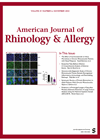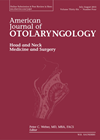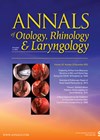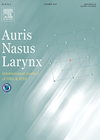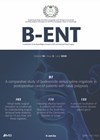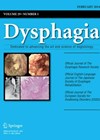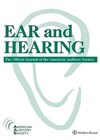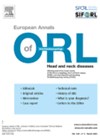
Journal Reviews archive for 2024
Can prediction models help identify dysphagia in ventilated patients?
Dysphagia commonly affects patients in intensive care units (ICU), particularly those on mechanical ventilation, and is associated with high risk of mortality. This systematic review and meta-analysis aimed to identify predictors for dysphagia in ventilated ICU patients by summarising existing...
Thyroidectomy - a pictorial walk through the surgical steps
We as ENT surgeons work closely with the endocrinologist to provide MDT care for patients with a variety of pathologic conditions of the thyroid gland, including benign, malignant and hormonal disease processes. Surgery plays a central role for a variety...
Transverse venous sinus stenosis – a risk factor for CSF leak in patients with idiopathic intracranial hypertension
This was a multicentre (six French tertiary hospitals) retrospective case-controlled study aiming to investigate the rate of transverse venous sinus stenosis (TVSS) in patients with idiopathic intracranial hypertension (IIH) with nasal cerebrospinal fluid (CSF) leaks. They compared the preoperative MRI...
Feel what you say: a framework to demonstrate the emotional response to aphasia is intertwined with the emotional toll
The authors start this paper by flagging a recent study demonstrating that speech and language therapists in clinical practice rarely have time to focus on emotional issues in relation to aphasia. Yet, people with aphasia describe the close relationship between...
Balloon dilatation of the eustachian tube - largely very safe but not entirely without risk
Consent is a fundamental part of our daily working lives. This is something as simple as consent to examine a patient, consent to undertake a procedure as minor as taking blood, through to consent for a major operation. Whatever the...
Does transoral robotic surgery improve outcomes among patients with head and neck cancer of unknown primary?
A tonsillectomy and tongue base mucosectomy is becoming increasingly accepted as the optimal surgical intervention to aid in identifying the primary source of a p16+ / HPV-related squamous cell carcinoma (SCC) of unknown origin, given that this disease almost exclusively...
Newborn sensorineural hearing loss – what is the incidence?
In the last two decades, the introduction of newborn screening for hearing loss has dramatically lowered the average age of newborn hearing loss diagnosis to around two to three months of age. The benefits of early diagnosis are manifold, enabling...
Transtympanic plugging for chronic patulous eustachian tube
The authors developed a silicone plug (Kobayashi plug) to manage severe intractable patulous eustachian tube dysfunction (PET). This retrospective study investigates ET function after Kobayashi plug surgery, based on postoperative tympanic membrane (TM) findings and active opening (AO) of the...
Lymph node metastases in papillary thyroid cancer
This retrospective Korean cohort study looked at the risk factors associated with bilateral lateral lymph node metastases in patients with unilateral papillary thyroid cancer. There were 11 patients who met the inclusion criteria across an 11-year period from 2009 to...
Analysing videofluroscopy: does it matter how it’s done?
Videofluoroscopy, as a tool that assesses the process of swallowing, has transformed our understanding of dysphagia. Clinicians can observe the biomechanics of a bolus moving from the oral cavity through the pharynx and oesophagus and into the stomach. Over the...
How to increase uptake of hearing screening in primary care
Untreated hearing loss leads to an increased risk of dementia and depression. There is currently little evidence to support the benefits of hearing screening in asymptomatic older adults. The main aim of the study was to compare three hearing screening...
Septoplasty revisited
Septoplasty is one of the commonest rhinological surgeries performed. With the advent of minimally invasive surgical concepts, endoscopic targeted septoplasty was introduced. This study aimed to compare the complications and outcomes between endoscopic septoplasty and conventional septoplasty by a PRISMA...





